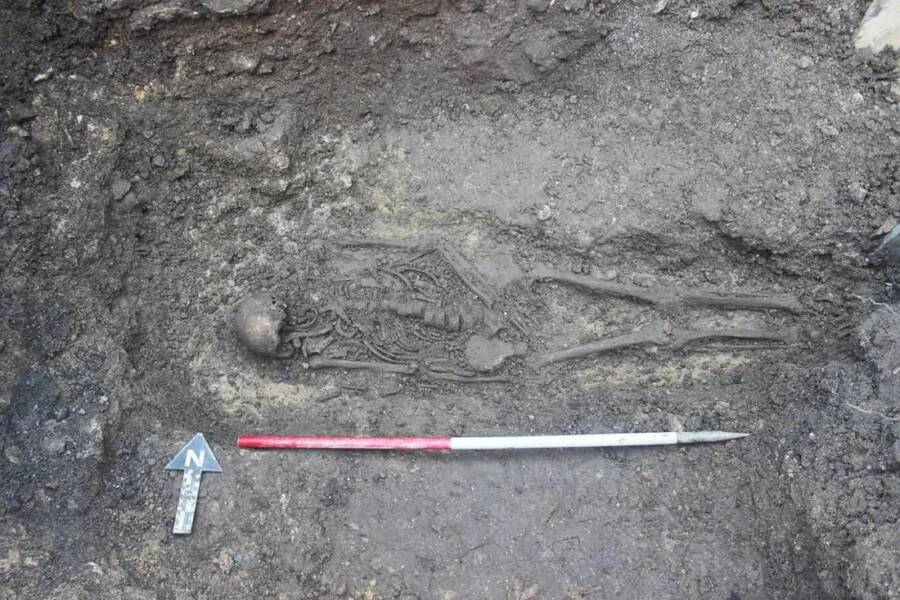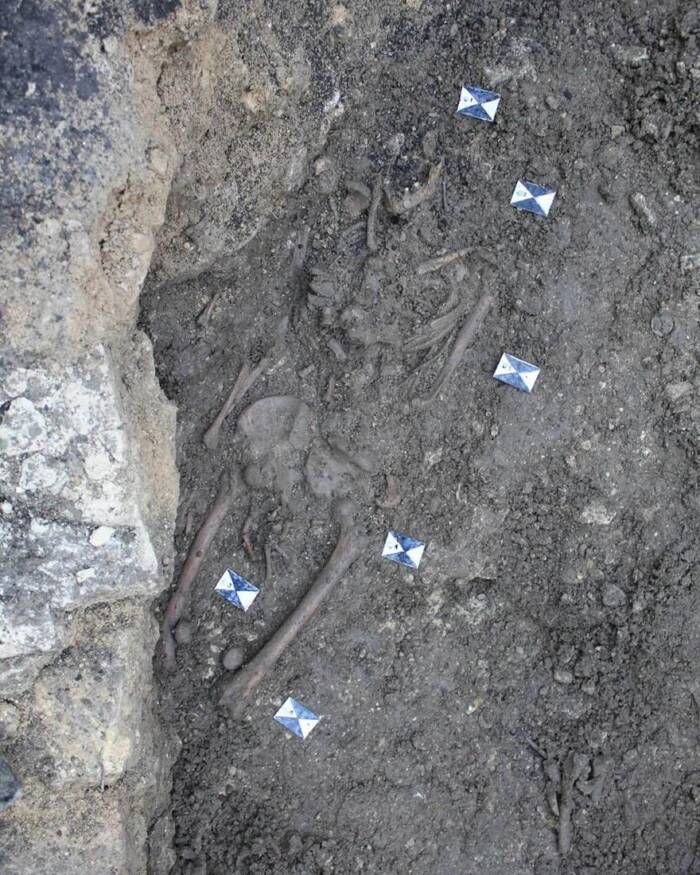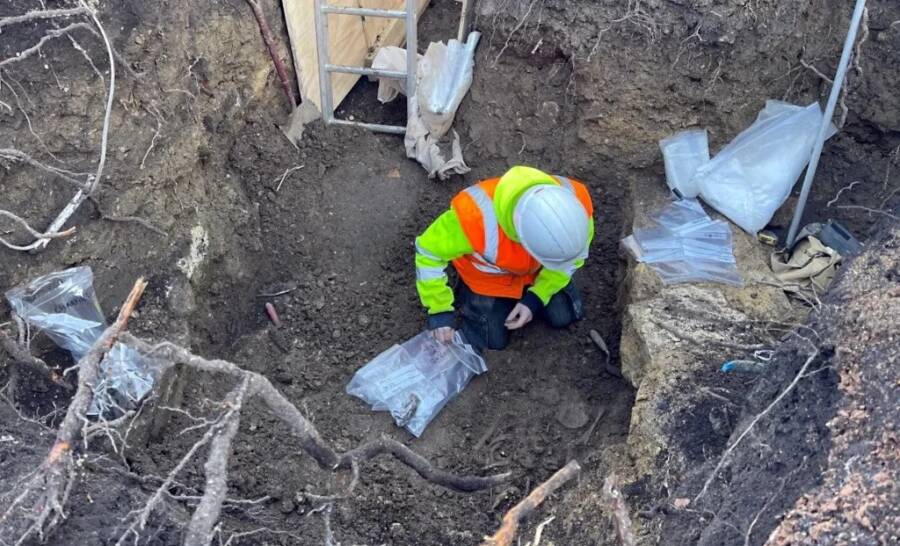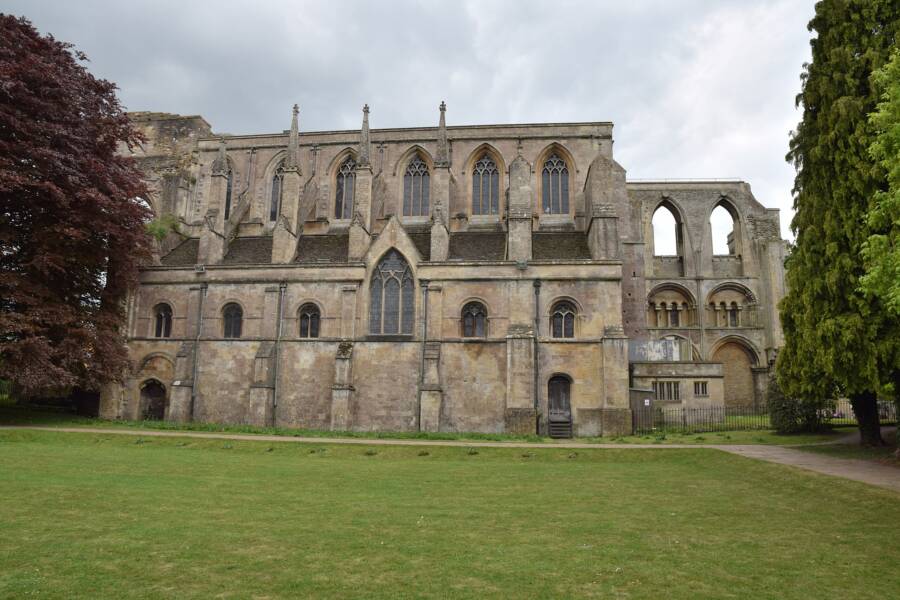Two dozen skeletons and other bones dating to between 670 and 940 C.E. were discovered on the grounds of the historic Old Bell Hotel in Malmesbury, England.

Cotswold ArchaeologyOne of the skeletons discovered on the grounds of The Old Bell Hotel.
During a routine survey ahead of construction work at The Old Bell Hotel in Malmesbury, England, archaeologists stumbled upon the remains of two dozen skeletons under the hotel garden. This shocking collection of human remains is more than 1,000 years old, and includes men, women, and children.
Now, these remains are revealing more than ever before about the rich history of the Malmesbury Abbey next door.
Discovering The Skeletons At The Old Bell Hotel

Old Bell HotelThe Old Bell Hotel is centuries old, and part of the building dates back to the Middle Ages.
According to Cotswold Archaeology, which oversaw the excavation, the human remains at The Old Bell Hotel were discovered by surprise. A routine survey revealed the cemetery, which includes two dozen skeletons as well as “material relating to a number of other individuals.”
The remains date to between 670 and 940 C.E., squarely in the Middle Ages, and include men, women, and children. The find is especially significant because it seems to be connected with nearby Malmesbury Abbey.

Cotswold ArchaeologyIn all, archaeologists discovered two dozen skeletons as well as other human remains on the grounds of The Old Bell Hotel.
“This dating is incredibly exciting and adds a huge amount to the story of Saxon Malmesbury,” Alex Thomson, who managed the archaeological fieldwork told All That’s Interesting.
Thomson continued: “It suggests that the burials were potentially associated with the early establishment of the Benedictine monastery, which is generally dated to the 7th century by documentary sources. The finds represents the first confirmed evidence of 7th to 9th century AD activity in Malmesbury. In particular, the nature of the evidence identified, namely a cemetery, can legitimately hint towards the nearby presence of a church predating the Abbey that would have been associated with the cemetery.”

Cotswold ArchaeologyAn archaeologist during excavations at The Old Bell Hotel.
According to Thomson, no grave goods were found with the burials (which isn’t unusual for Christian burials from this period). For now, he and other archaeologists aren’t sure who these people were but are hopeful that “further analysis of the remains will help us answer that question.”
Whoever they were, they make up a part of the story of Malmesbury Abbey. According to Cotswold Archaeology, the burials “shed new light on the way Malmesbury Abbey functioned during its golden age, a period when it was one of the leading centres of scholarship in western Europe.”
The Rich History Of Malmesbury Abbey

Hugh Llewelyn/Wikimedia CommonsMalmesbury Abbey as seen today.
The history of Malmesbury Abbey stretches back to at least the early seventh century, when a nunnery was established on the site. Around 675 C.E., it was converted into a monastery that quickly became a center of scholarship as well as the site of the first organ ever built in England.
Malmesbury, considered the first capital of England, was also home to the first saint of Wessex, St. Aldhelm, the first king of England, Athelstan (who is buried at the Abbey), and English philosopher Thomas Hobbes.
It also played host to a number of fascinating historical moments, like when an 11th-century monk named Brother Eilmer tried to fly with a pair of rudimentary wings (he flew almost 600 feet before crashing and breaking his leg), and it may have been where the Anglo-Saxon poem Beowulf was transcribed.

Public DomainMalmesbury Abbey, as depicted in 1807.
The present-day abbey dates back to 1180, and once had a spire that made it the tallest building in England (though the spire collapsed in the 15th century).
As such, the two dozen skeletons found at The Old Bell Hotel likely made up a part of the abbey’s history. The remains possibly date back to the abbey’s seventh century origins, a point not lost on the current owners of The Old Bell Hotel.
As they told Cotswold Archaeology, “We are honoured to act as stewards of local history, a responsibility we take very seriously. This exciting discovery intertwines history with the present, providing a rare insight into the lives of Middle Saxon period Malmesbury residents.”
After reading about the 1,000-year-old skeletons discovered on the grounds of an English hotel, look through these fascinating facts about life in the Middle Ages. Then, look through this collection of medieval torture devices.





